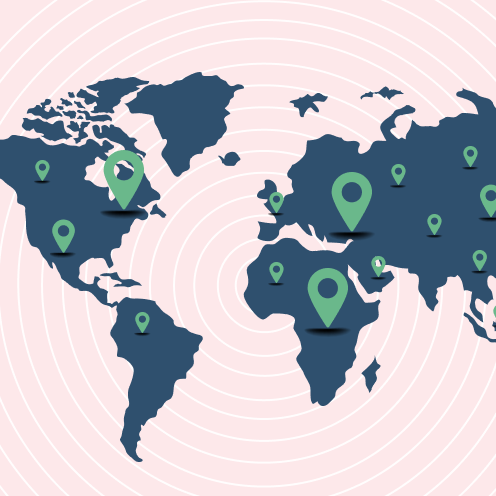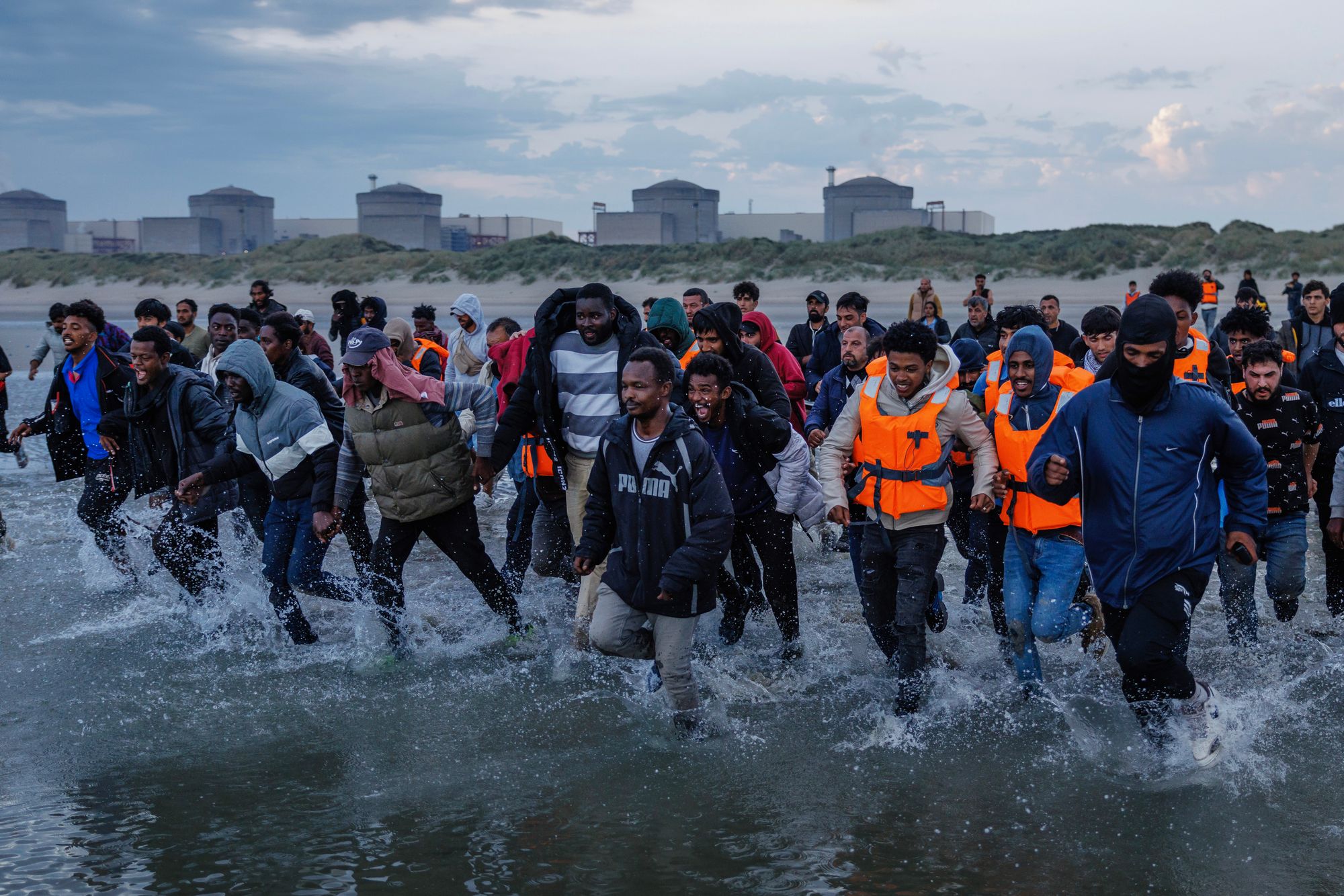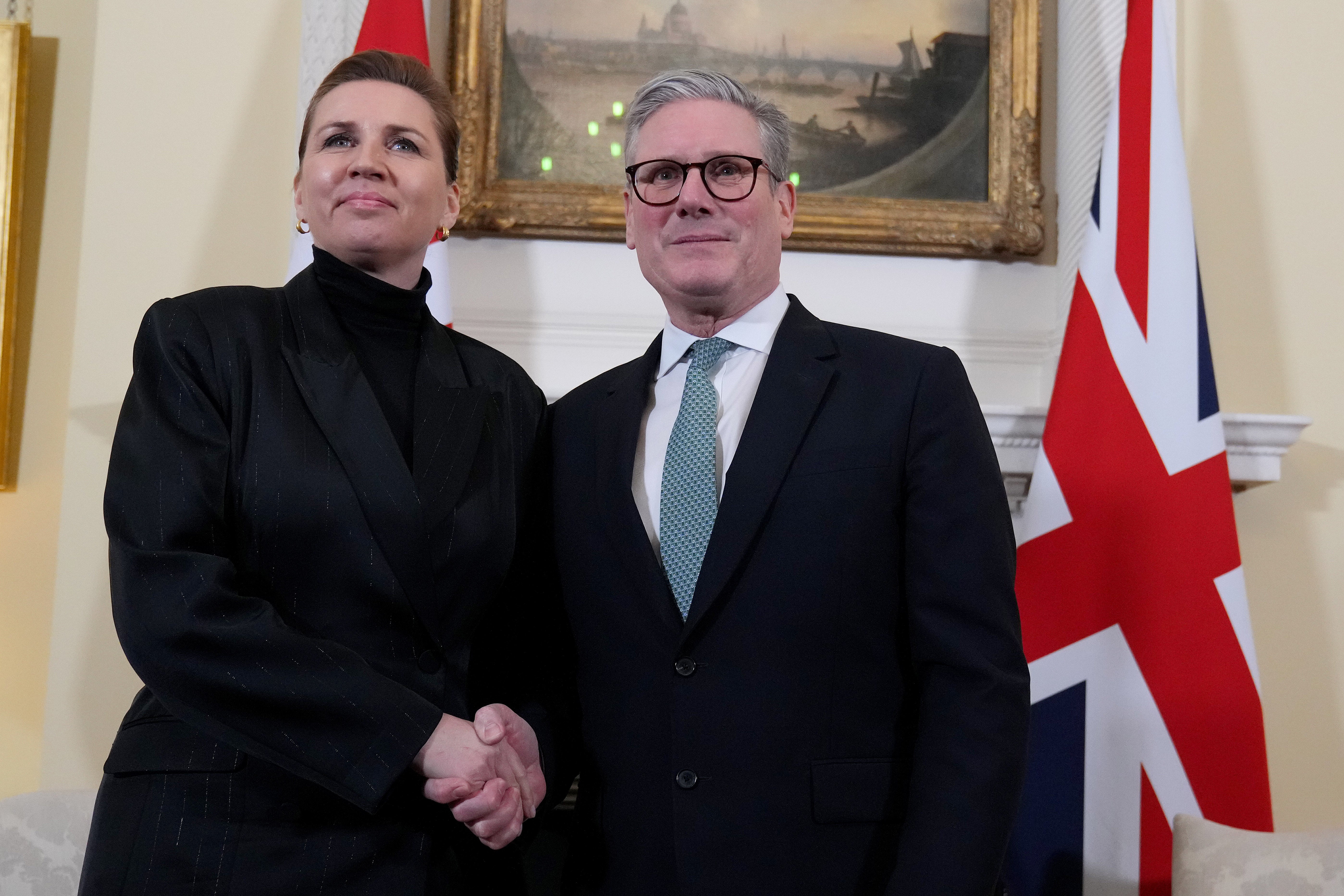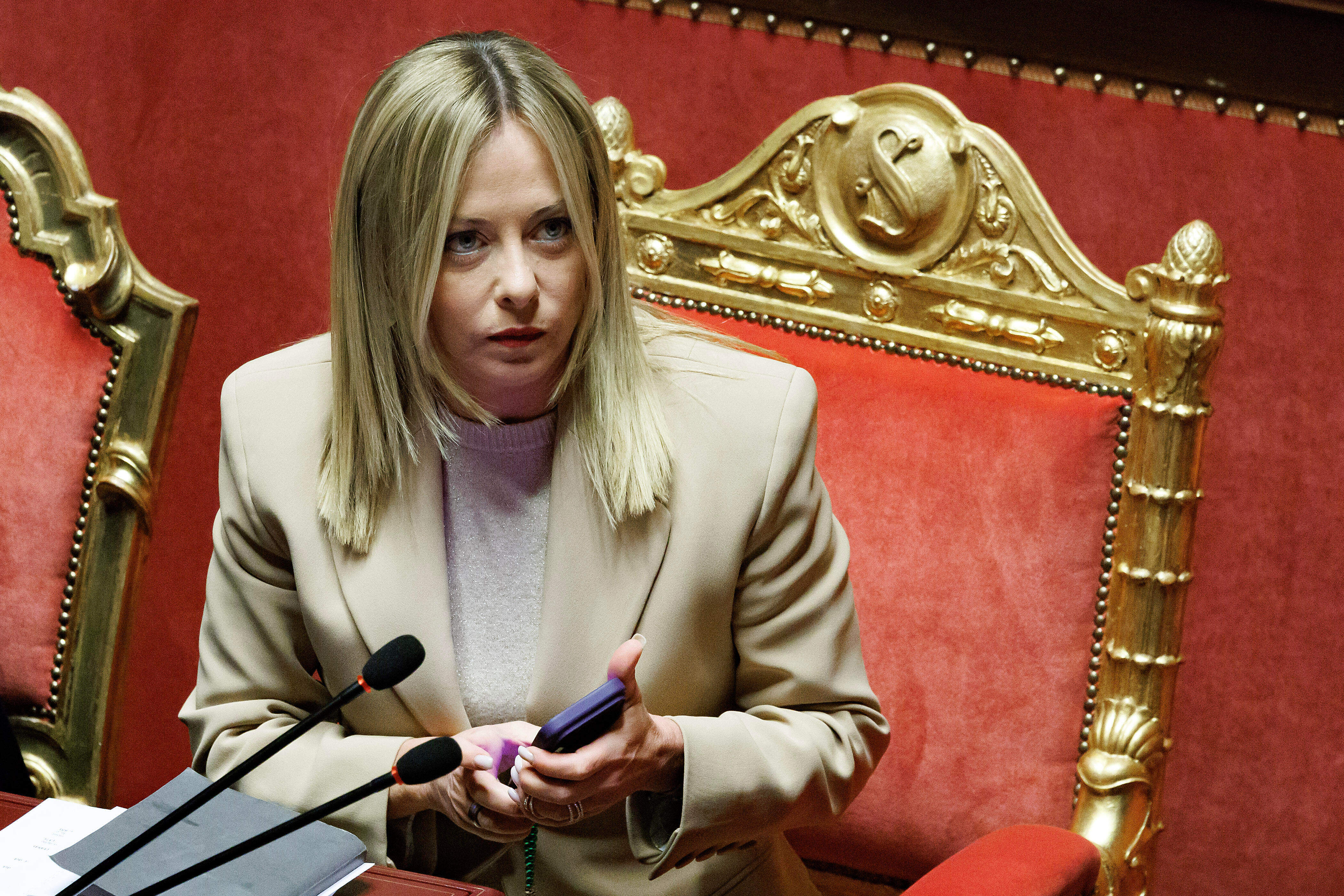- News
- World
- Europe
Home secretary Shabana Mahmood is carrying out one of the largest reforms to the asylum system the UK has ever seen. But is the overhaul really proportionate to the numbers arriving on UK shores? Alex Croft reports
Sunday 23 November 2025 11:00 GMTComments
 CloseMahmood vows to restore order and control to the border as she unveils major asylum reforms
CloseMahmood vows to restore order and control to the border as she unveils major asylum reforms
On The Ground newsletter: Get a weekly dispatch from our international correspondents
Get a weekly dispatch from our international correspondents
Get a weekly international news dispatch
 Email*SIGN UP
Email*SIGN UPI would like to be emailed about offers, events and updates from The Independent. Read our Privacy notice
The UK government has unveiled plans for a radical overhaul of its asylum system, as immigration continues to dominate the political agenda.
Home Secretary Shabana Mahmood proposals are facing fierce backlash, having been described by her own Labour MPs as “performatively cruel”.
Under the new rules, refugee status will become temporary - lasting just 30 months instead of the current five years - and will be revoked once it is deemed safe for the individual to return home.
 open image in galleryMigrants wade into the water in an attempt to board a small boat on the shoreline in northern France (Getty)
open image in galleryMigrants wade into the water in an attempt to board a small boat on the shoreline in northern France (Getty)The UK will also revoke its legal duty to support asylum seekers who would otherwise be destitute, and will seize assets and income from asylum seekers to contribute to the cost of their support.
With Britain’s asylum policy set to become one of the toughest in Europe, The Independent takes a look at how the current UK statistics really compare to the rest of Europe - and the policies behind the numbers.
How does the UK compare to Europe on asylum seekers
Data shows that the UK receives far fewer asylum seekers than comparable European countries in proportion to population size.
Per 100,000 people in 2024, the UK came fifth for most applicants (156) after Spain (340), Germany (275), Italy (256) and France (191). The EU average last year was 203 per 100,000 people.
The UK is now seeking to emulate reforms carried out by in Denmark by Danish prime minister Mette Frederiksen after she was elected in 2019. Two years earlier, the two nations were on a level pegging, proportionally speaking.
Denmark received 57 applications per 100,000 people on average, and the UK 55. Since the 2019 measures came into force, the UK has seen its number treble to 156 per 100,000, while Denmark’s numbers fell in the same period.
However the two situations are not entirely comparable; the overall numbers of applicants is significantly lower in Denmark, both before and after the change in policy.
Denmark had an average of 4,215 in the three years leading up to its 2019 reforms, while the UK saw significantly figures between 50,000 and 100,000 during the same period.
UK rejects more asylum applications than EU average
Data from last year also shows that the UK rejected more asylum applicants than its European neighbours last year.
The UK rejected 44,433 (52.9 per cent) of the 84,049 applicants who received a decision in 2024, compared to the EU average of 48.6 per cent.
This was a huge decline from 2023, however, when 69.0 per cent of the 91,811 asylum applicants in the UK were granted protection.
Despite its strict new system, Denmark granted 48.1 per cent of applicants asylum in 2024. But Clingendael, a Dutch think-tank, says this is because Denmark receives “very few applicants from so-called safe countries”.
The policies behind the numbers
Denmark
Denmark is known for having one of Europe’s strictest asylum systems, after Ms Frederiksen promised a “zero asylum seekers” approach before her election in 2019.
While many EU countries saw asylum applications rise since the pandemic, Denmark’s has stayed relatively similar, owing to its tough approach.
But the electoral benefits of Ms Frederiksen’s reforms were this week called into question, after dismal local results saw her party lose support to rivals on both the left and the populist right.
- Denmark receives a relatively low number of applications, averaging at 46 per 100,000 since 2017.
- Policies include short-term residence permits for refugees, confiscating valuables, tighter family reunification rules, and ‘departure centres’ for those do not cooperate in leaving.
- It explored sending asylum seekers to third countries, including Rwanda.
 open image in galleryPrime Minister Sir Keir Starmer welcomes Prime Minister of Denmark Mette Frederiksen to 10 Downing Street (PA) (PA Wire)
open image in galleryPrime Minister Sir Keir Starmer welcomes Prime Minister of Denmark Mette Frederiksen to 10 Downing Street (PA) (PA Wire)Germany
Despite being Europe’s most welcoming country for asylum seekers in recent years, immigration has become one of the critical political issues in Germany.
It has been the cornerstone of the agenda of the Alternativ fur Deutschland, the far-right political party which earlier this year became the second largest party in the German parliament on a fiercely anti-immigration platform.
The German government, while refusing to work with the AfD, has sought to fend off the party’s rise, such as by introducing stricter border controls introduced in 2025 allowing federal police to turn away asylum seekers who don’t have valid entry documents.
- Germany consistently receives the most asylum seekers. In 2023, around 329,040 applied, declining to 229,700 in 2024.
- Asylum seekers are given a temporary residence permit, providing various benefits, integration allowance and German language courses.
- Refused applicants who can’t return home for legal or humanitarian reasons may be granted suspension of deportation.
 open image in galleryThe UK has seen protests against the housing of asylum seekers in hotels (AFP via Getty Images)
open image in galleryThe UK has seen protests against the housing of asylum seekers in hotels (AFP via Getty Images)Spain
Spain has a relatively welcoming asylum policy in comparison to other countries in Europe, and has seen the number of applications dramatically increase in the past five years.
Much of this has been a result of a major increase in arrivals on small boats, with 46,843 people arriving on the Canary Islands by sea.
Left-leaning prime minister Pedro Sanchez has called for a “more coherent and humanitarian approach” to migrants, and last year framed welcoming asylum seekers as a moral “duty”, although he has called on the burden to be spread around Europe.
- Applications have nearly trebled since 2021, reaching a record 164,000 in 2024, the second most in Europe.
- In 2024, Spain granted 57 per cent of asylum applications, well above the EU average.
- It offers a reception and integration support programme lasting 18 months, and with asylum seekers allowed to work six months after their application was lodged.
Italy
Italy, which for decades has received thousands of refugees via the Mediterranean Sea, saw a sharp shift in the country’s asylum policy since the election of right wing Giorgia Meloni in 2022.
Asylum policy became more restrictive, prioritising border control, repatriation, and off-EU processing, with a less generous reception for new asylum seekers.
Measures aimed at deterring asylum seekers from making the trip to Italy has failed to stem the flow, and in 2024 asylum applications had nearly doubled since Ms Meloni assumed office.
- In 2024, Italy granted asylum to just 35.9 per cent of its 151,000 applicants. In 2024, it received the third must applications.
- Asylum seekers can look for a job just 30 days after making their application.
- Successful applicants are granted a five year permit, after which they can apply for a long-term EU residence permit or Italian citizenship.
 open image in galleryGiorgia Meloni was elected on an anti-immigration platform (LaPresse)
open image in galleryGiorgia Meloni was elected on an anti-immigration platform (LaPresse)France
A polarised political landscape in France has seen president Emmanuel Macron’s government take an increasingly tough stance against migration and asylum seekers.
The far-right Rassemblement National (RN), led by Marine Le Pen from 2012 until 2012 before Jordan Bardella assumed the leadership, enjoyed increasing electoral success before winning 142 seats in 2024.
This piled the pressure on the government, which expanded deportation powers and imposed tougher conditions for social benefits in response.
- For four of the past seven years, France has had the second most applications in Europe, peaking at 145,000 in 2023. In 2024, it dropped to fourth with 130,800.
- Applicants can work after six months if no decision has been made on the application. If approved, they are entitled to a variety of benefits, and can also bring close family to France.
- Refugee status provides a 10-year resident permit, after which they can apply for permanent residency or citizenship, subject to integration requirements.
More about
Governmentasylum seekersSpainItalyMigrationGermanyEUDenmarkShabana MahmoodJoin our commenting forum
Join thought-provoking conversations, follow other Independent readers and see their replies
Comments


